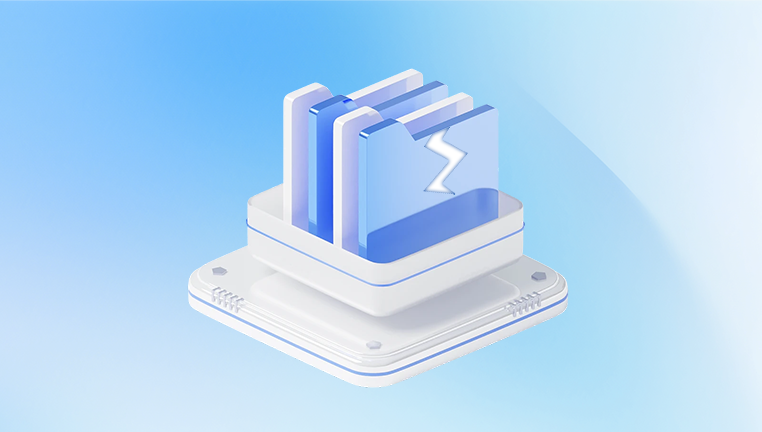How to recover damaged excel file
Microsoft Excel is one of the most widely used software programs for data analysis, tracking, and organization. However, one of the most frustrating issues that users may face is a corrupted or damaged Excel file. A damaged file can result from a variety of factors, such as system crashes, sudden power outages, improper shutdowns, or issues during the saving process.
1. Causes of Excel File Corruption
Before diving into the solutions, it's crucial to understand why an Excel file might become corrupted. Some of the common causes include:
Unexpected System Shutdowns: A sudden shutdown, such as during a power outage or system crash, can interrupt the file-saving process, causing the file to become corrupt.
Improper File Saving: If Excel crashes while you’re saving a file, or if there is insufficient disk space, the file may become corrupted.

Virus or Malware Attacks: Malware infections can damage your Excel files, particularly if the malicious software targets Excel or other Office files.
File Transfer Errors: If an Excel file is transferred between systems, especially across different operating systems, it may become corrupted due to compatibility issues.
Disk Failures: Physical damage or issues with the storage medium, such as bad sectors on a hard drive, can cause Excel files to become corrupted.
2. Checking Excel’s Auto-Recovery Feature
One of the first places you should check when dealing with a damaged Excel file is Excel's Auto-Recovery feature. This feature is designed to automatically save a backup of your work at regular intervals.
How to Use Auto-Recovery:
Open Excel and go to the File tab.
Click Open, and then select Recent.
Look at the bottom of the list for Recover Unsaved Workbooks.
Click on this option to see if a recovery version of your file is available.
If you find an auto-recovered version of your file, click to open it.
Save it to a new location with a different name.
Auto-Recovery may not always work, but it’s worth checking before trying more complicated solutions.
3. Opening Excel in Safe Mode
Sometimes, Excel itself may be causing the problem, especially if add-ins or other settings are interfering with your files. Opening Excel in Safe Mode can help bypass these issues.
Steps to Open Excel in Safe Mode:
Close Excel completely.
Press and hold the Ctrl key on your keyboard.
While holding Ctrl, double-click the Excel file you want to open.
Excel will open in Safe Mode, disabling any add-ins, custom toolbars, and other settings that might be causing the corruption.
If your file opens correctly in Safe Mode, you can save a new copy of the file and disable any add-ins or settings that might be causing the problem.
4. Using Excel’s Built-in Repair Feature
Excel provides a built-in file repair option that can sometimes fix minor corruption issues. This option is helpful if the file won’t open, or if it’s showing error messages when you try to access it.
How to Use the Repair Feature:
Open Excel and click on the File tab.
Select Open and browse to the location of the damaged file.
Instead of opening the file normally, click on the file once to select it.
Click the small arrow next to the Open button, and then choose Open and Repair.
You will be presented with two options:
Repair: This option tries to repair the file and recover as much data as possible.
Extract Data: If the repair option fails, you can try to extract the data without formatting.
If the repair option works, save the recovered file to a new location to prevent further damage.
5. Opening the File in Google Sheets or Another Spreadsheet Program
If Excel cannot open your damaged file, try opening it in another program like Google Sheets, LibreOffice Calc, or OpenOffice Calc. These programs sometimes have more lenient error handling, and may be able to open a file that Excel cannot.
Steps to Open in Google Sheets:
Go to Google Drive and upload the damaged Excel file.
Once the file is uploaded, right-click it and choose Open with > Google Sheets.
Google Sheets will try to open the file, and if successful, you can download it as an Excel file again or use the online editor to make any necessary corrections.
This method works particularly well for files with minor corruption or when Excel fails to open the file at all.
6. Using a Previous Version of the File
Windows has a built-in feature called File History (for Windows 8 and above), which automatically creates backups of files stored in specific locations. If the Excel file was previously backed up, you may be able to recover an earlier version.
Steps to Recover a Previous Version:
Right-click on the damaged Excel file.
Select Properties from the context menu.
Click on the Previous Versions tab.
Here, you’ll see a list of available versions of the file.
Choose a version and click Restore to recover it.
Note that this method requires File History or system restore points to be enabled prior to the file’s corruption.
7. Using Third-Party Excel Repair Tools
Panda Repair
When your Excel file becomes damaged or unreadable, it can feel like all your hard work has vanished. Fortunately, Panda Repair offers a reliable, user-friendly solution for restoring corrupted Excel files quickly and efficiently. Whether the damage occurred due to a system crash, improper shutdown, virus infection, or file transfer error, Panda Repair is equipped to recover data from both .xls and .xlsx formats with precision.
Using advanced scanning algorithms, Panda Repair analyzes the damaged file to locate recoverable content, including formulas, charts, formatting, and cell data. Its intuitive interface ensures even non-technical users can navigate the repair process with ease. Simply upload the corrupted Excel file, and Panda Repair will guide you through the steps to scan, preview, and recover your data.
Panda Repair supports bulk recovery, making it ideal for business users dealing with multiple files. It also maintains the file’s original structure, helping you resume your work exactly where you left off. For severely corrupted files, Panda Repair attempts partial recovery to salvage as much information as possible.
8. Using VBA (Visual Basic for Applications)
If you're familiar with coding, you can try using a VBA macro to recover data from a damaged Excel file. This method involves writing a simple macro that attempts to open the file and recover its data.
Steps to Use VBA for Recovery:
Open a new Excel workbook.
Press Alt + F11 to open the Visual Basic for Applications editor.
In the editor, click Insert and then Module to create a new module.
Paste the following VBA code into the module:
vba
CopyEdit
Sub RecoverData() Dim wb As Workbook Dim ws As Worksheet Dim lastRow As Long Dim lastCol As Long On Error Resume Next Set wb = Workbooks.Open("C:\path\to\your\damaged\file.xlsx") If Not wb Is Nothing Then Set ws = wb.Sheets(1) lastRow = ws.Cells(Rows.Count, 1).End(xlUp).Row lastCol = ws.Cells(1. Columns.Count).End(xlToLeft).Column ws.Copy ActiveWorkbook.SaveAs "C:\path\to\save\recovered_file.xlsx" MsgBox "Recovery Complete!" Else MsgBox "Unable to open file!" End If End Sub
Modify the file path in the code to point to your damaged Excel file and a location to save the recovered file.
Press F5 to run the code, and the recovery process will begin.
This approach is a bit technical but can be effective for recovering data that can’t be opened normally.
9. Preventing Future Excel File Corruption
Once you’ve successfully recovered your Excel file, it’s essential to take steps to prevent future corruption. Some strategies include:
Regular Backups: Set up a regular backup system to ensure that you always have a copy of your important files.
Use Cloud Storage: Save your files to a cloud service such as OneDrive, Google Drive, or Dropbox. Cloud storage often includes versioning features that allow you to recover previous file versions.
Update Excel: Make sure your Excel and Office suite are up to date, as Microsoft often releases updates that improve stability and fix bugs.
Avoid Improper Shutdowns: Ensure your system is set up to handle power failures or crashes by using a UPS (Uninterruptible Power Supply) or enabling autosave features in Excel.

